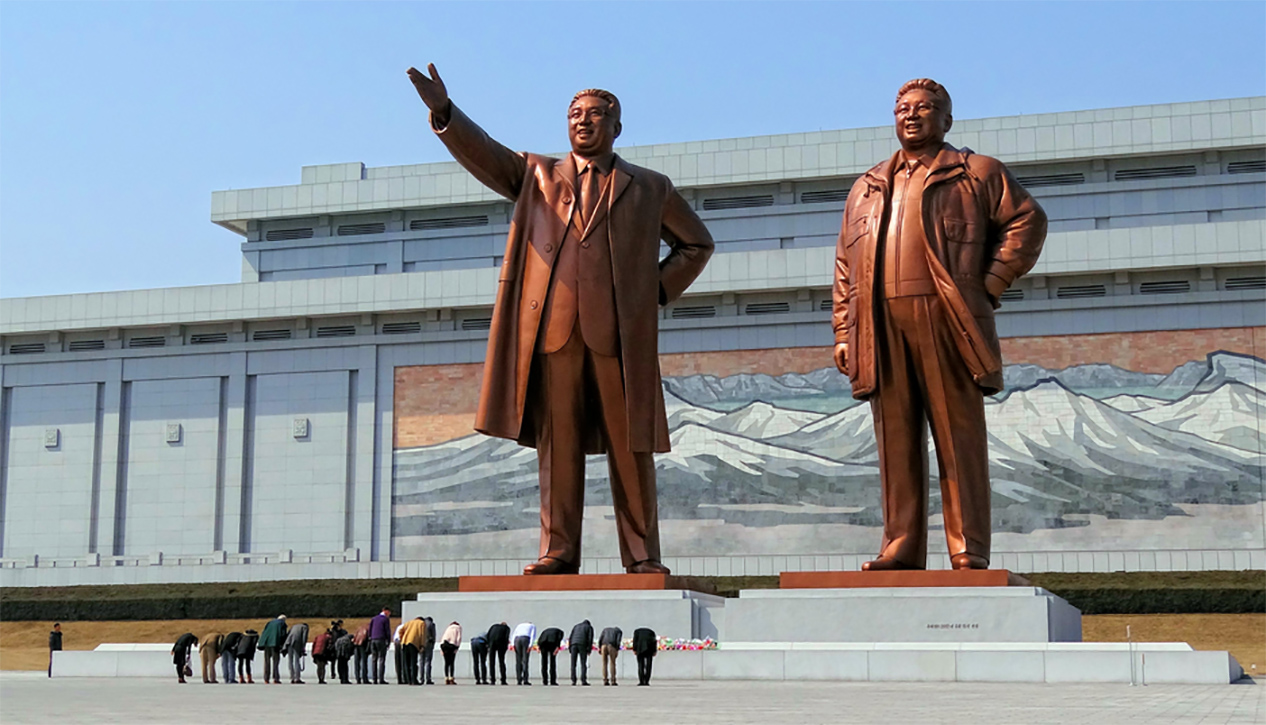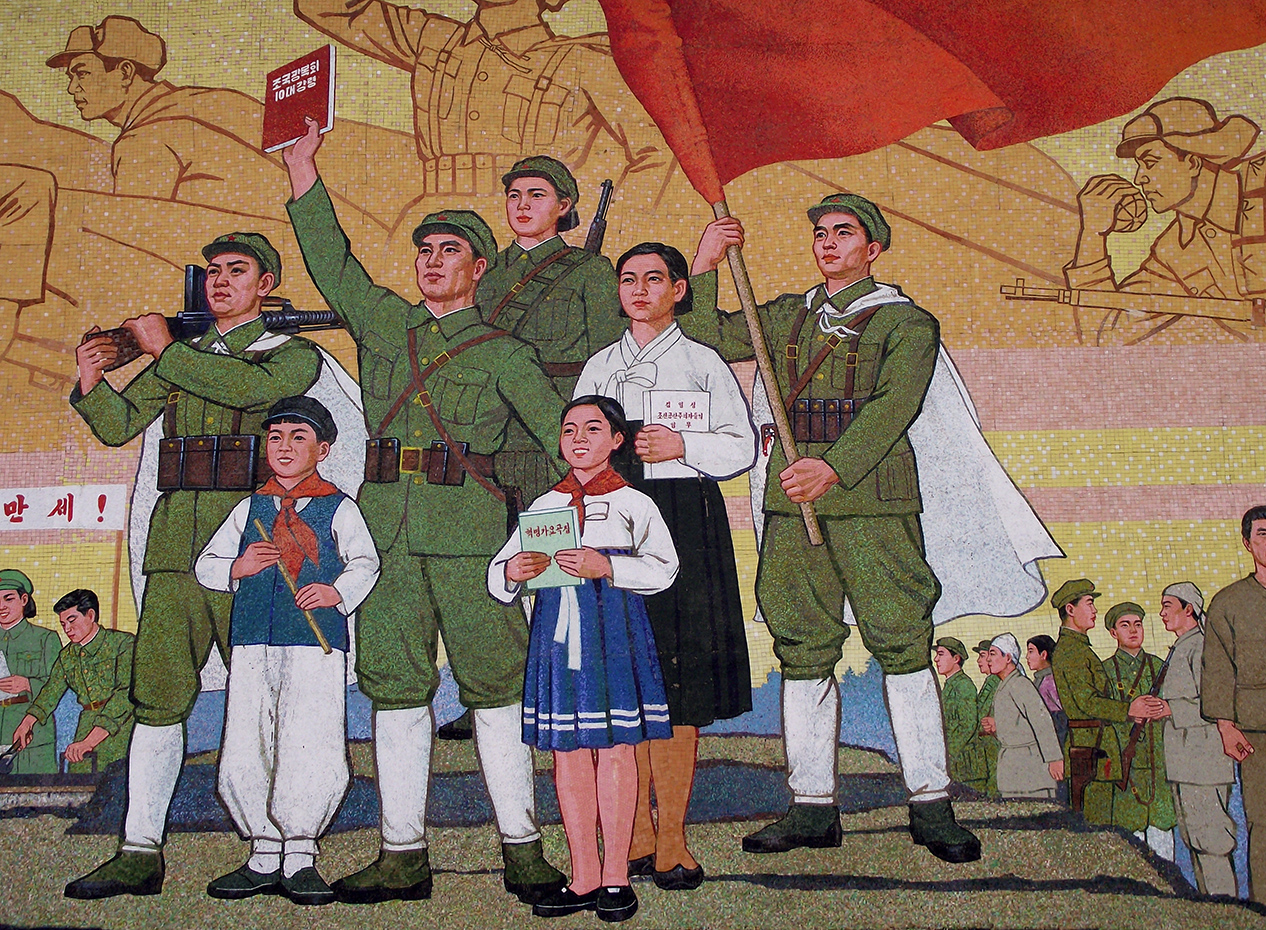- Home |
- Search Results |
- 5 things you didn’t know about the world’s most secretive state
So much about North Korea is stranger than fiction. Scarcely a week passes when this tiny, nuclear-armed dictatorship doesn’t make the world’s headlines. Yet it remains so secretive and closed that few outsiders have any understanding of the regime’s thinking, or the everyday life of its people. Here are a few glimpses of North Korea picked up while writing Star of the North.

‘The fifty thousand citizens waved their paper flowers rhythmically, creating a shimmering mirage of red and pink. Hundreds of white doves were released and circled above.
The distant figure of the Kim Jong-il was emerging onto the terrace, followed by an entourage of politburo members, senior Party cadres, and generals in sand-colored tunics with gold trim. The noise rose to an electrifying roar. The great man acknowledged the crowds with a gentle wave of his hand, as if blessing them, and Cho felt his power like an arrow from the sun. Dear Leader, Dear General.
How humble this man was in his simple worker’s clothes! How frail from the hardships he’d endured for the people’s happiness.
Tears pricked Cho’s eyes, and almost at the same moment everyone around him began to weep. The cheering mixed with wailing.’
from D. B. John's Star of the North
The cult of Kim
In a totalitarian tyranny absolute loyalty to the leader is the first rule of survival. I decided to visit North Korea after seeing footage of the crowds in Pyongyang shortly after Kim Jong-il’s death in December 2011. People were wailing and prostrating themselves in the snow. There was fear in their tears, and with good reason. Labour camps awaited those whose sorrow was deemed lacking.
The leader cult is central to the regime’s power. It is largely the creation of Kim Jong-il, who, in the 1960s and 70s, began to deify his father Kim Il-sung, the country’s founder and self-styled Great Leader, in a personality cult as extravagant as Mao’s. Giant bronze statues of the Great Leader were erected in every North Korean city and became objects of veneration. Kim Jong-il’s flattery paid off. His father made him heir, and he reigned as the Dear Leader from 1994.
Today the cult remains a political religion that tolerates no heretics. It would be unthinkable to make a joke about the leader, or even to mention him without affixing one of his titles. Every home, every workplace and classroom must carry portraits on the Great Leader and Dear Leader, and must be cleaned regularly. All adults must wear a lapel pin with the image of one or both of them. The cult takes up about 30 per cent of education curriculum. Children learn shining legends from the lives of the Kims, while South Korean kids the same age are studying arithmetic and English.
The cult has naturally extended to the third in the dynasty, Kim Jong-un, hailed as a technological genius who has mastered the mysteries of computing, but he is not yet venerated in portraits and statues.
Subversive snacks
Choco Pies are a popular South Korean chocolate marshmallow biscuit. They are so much in demand in the North that they have become a form of currency. About 2.5 million Choco Pies were traded in North Korea's black markets every month before they were banned in 2014. After that North Korea began producing its own version.
Worried about the popularity of what was essentially a delicious piece of South Korean propaganda, the North Korean government launched a propaganda campaign of its own telling citizens that Choco Pies are harmful to the body. In response, South Korean activists floated 10,000 Choco Pies over the border in aid ballooons. In December 2017 a North Korean soldier who had been shot several times while escaping across the border to the South was promised a lifetime supply of Choco Pies by the manufacturer after requesting some in hospital.

The abductions program
In the 1970s and early 1980s the North Korean state actively abducted civilians from beaches in Japan and South Korea. These were not important military or political targets, but random people—teenage couples watching a sunset, a divorced man walking a dog, a local hairdresser, and so on.
The motive behind this bizarre criminal enterprise has never been fully explained. Some of the victims were put to work teaching local slang and customs to spies and assassins being trained to infiltrate Japan and South Korea; others had their identities stolen; some were brainwashed and sent back home as spies, but the majority of them had no obvious use to North Korea.
For years these abductions were the stuff of urban myth and conspiracy theories in Japan, until 2002, when, during a visit to Pyongyang, Japanese prime minister Junichiro Koizumi was stunned to receive an apology from Kim Jong-il for the abduction of thirteen Japanese citizens (the true number almost certainly runs to several hundred). It was the only public apology Kim had ever made.
Forced labour camps
There are two types of labor camp in North Korea. In the first category are camps for those sentenced to ‘revolutionary reeducation through labor’, from which, if they survive their punishment, prisoners may be released back into society and then monitored closely for the rest of their lives. The second category, operated by the Ministry of State Security, the Bowibu, are the extremely harsh ‘total control zone’ camps for political prisoners. Inmates there have little hope of release and are worked to death as slaves in farms, factories, and mines. About 80,000 to 120,000 political prisoners are estimated to be held in total control zone camps.
In both types of camp, conditions are life-threatening and unsanitary. Torture, beatings and public and secret executions are common, as is extremely dangerous work without safety equipment or protection. Most prisoners, however, die of illness and malnutrition, as food portions are tiny and many resort to eating rodents, snakes, and insects to survive.
Guilt by association
Often, three generations of a convicted prisoner’s family, including children and the elderly, are made to endure the punishment alongside the prisoner. A family will share the same hut inside the camp.
North Koreans also carry the perceived guilt of their ancestors under the songbun system, which divides the population into three classes: loyal, wavering, and hostile, depending on what the father’s ancestors were doing just before, during, and after the founding of the state in 1948. If your ancestors included workers and peasants, and fought on the right side during the Korean War, your family is classed as loyal. If, however, your ancestors included landowners, merchants, Christians, anyone who collaborated with the Japanese during the period of colonial rule, or anyone who fled to the South during the Korean War, then your family will be classed as hostile.
The hostile class—about forty percent of the population— are assigned to farms, mines, and menial labor. Only the loyal class gets to live in Pyongyang, has the opportunity to join the Workers’ Party, and the freedom to choose a career.
D. B. John’s Star of the North is published in in ebook on 3rd May and hardback on 10th May. Read an exclusive extract.